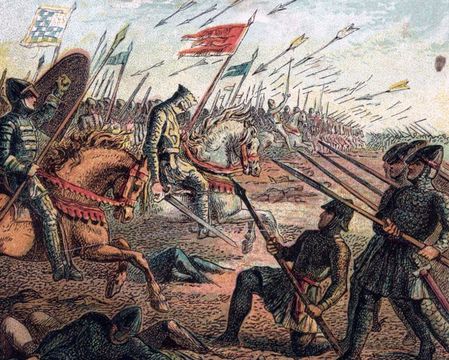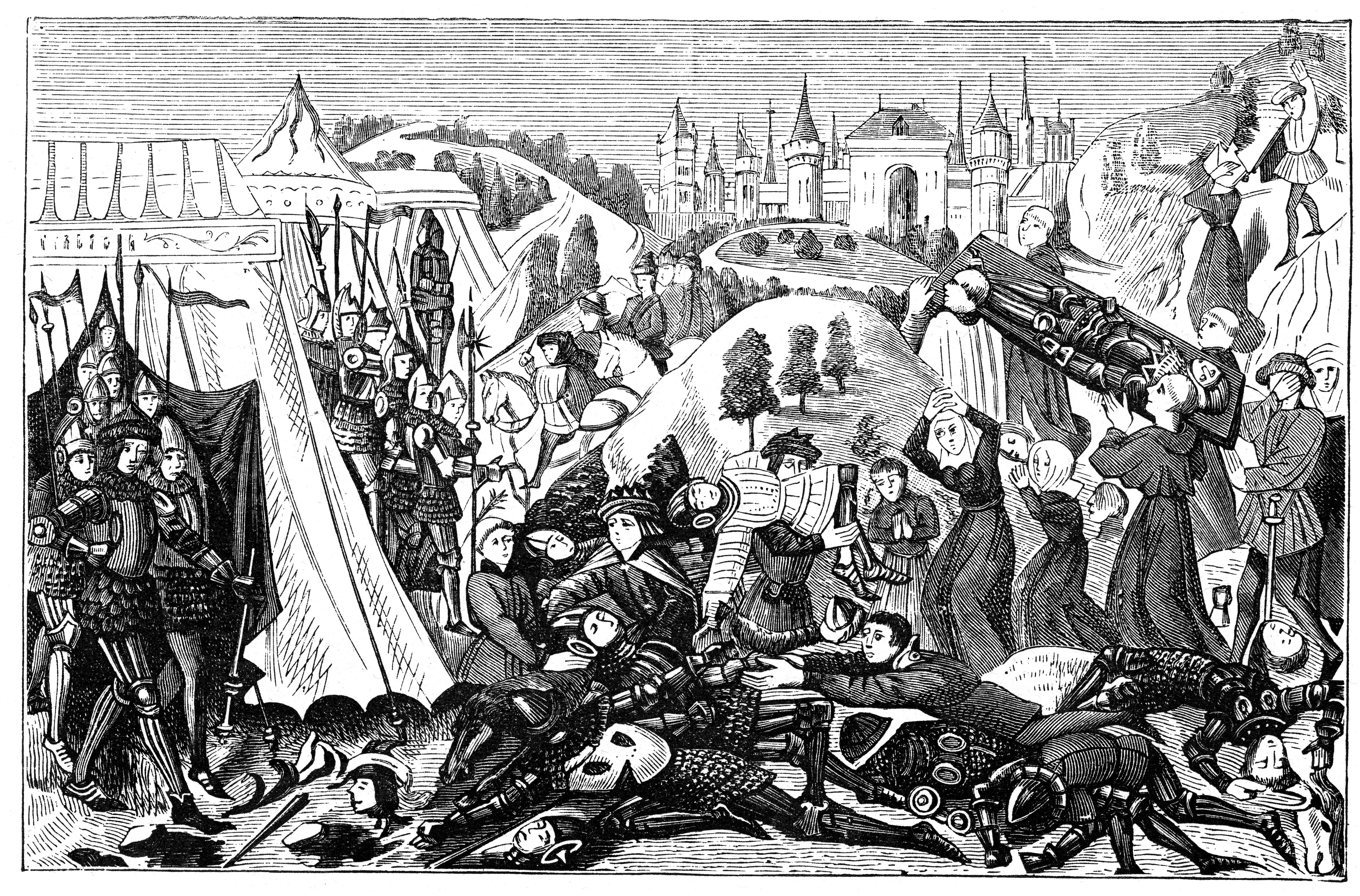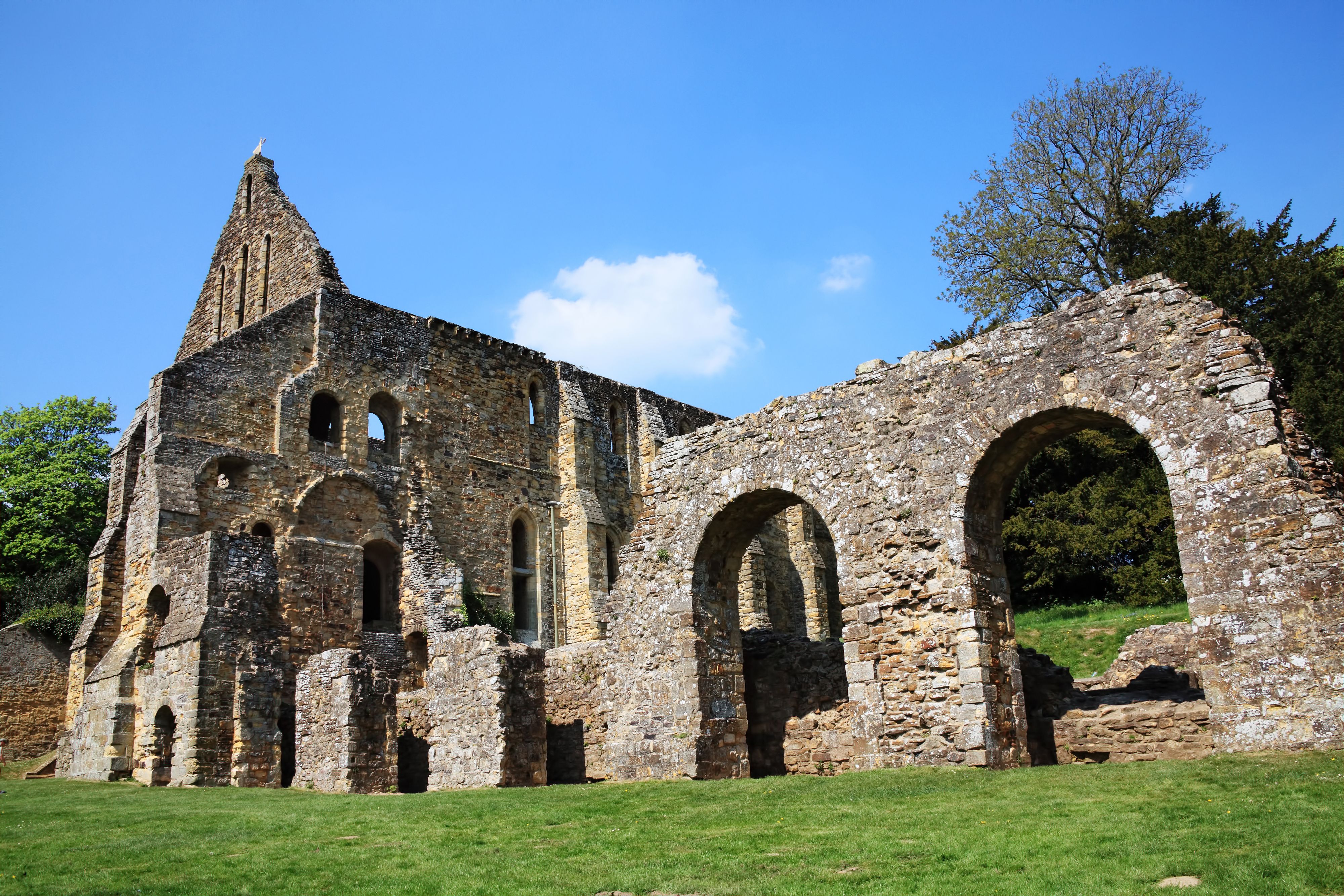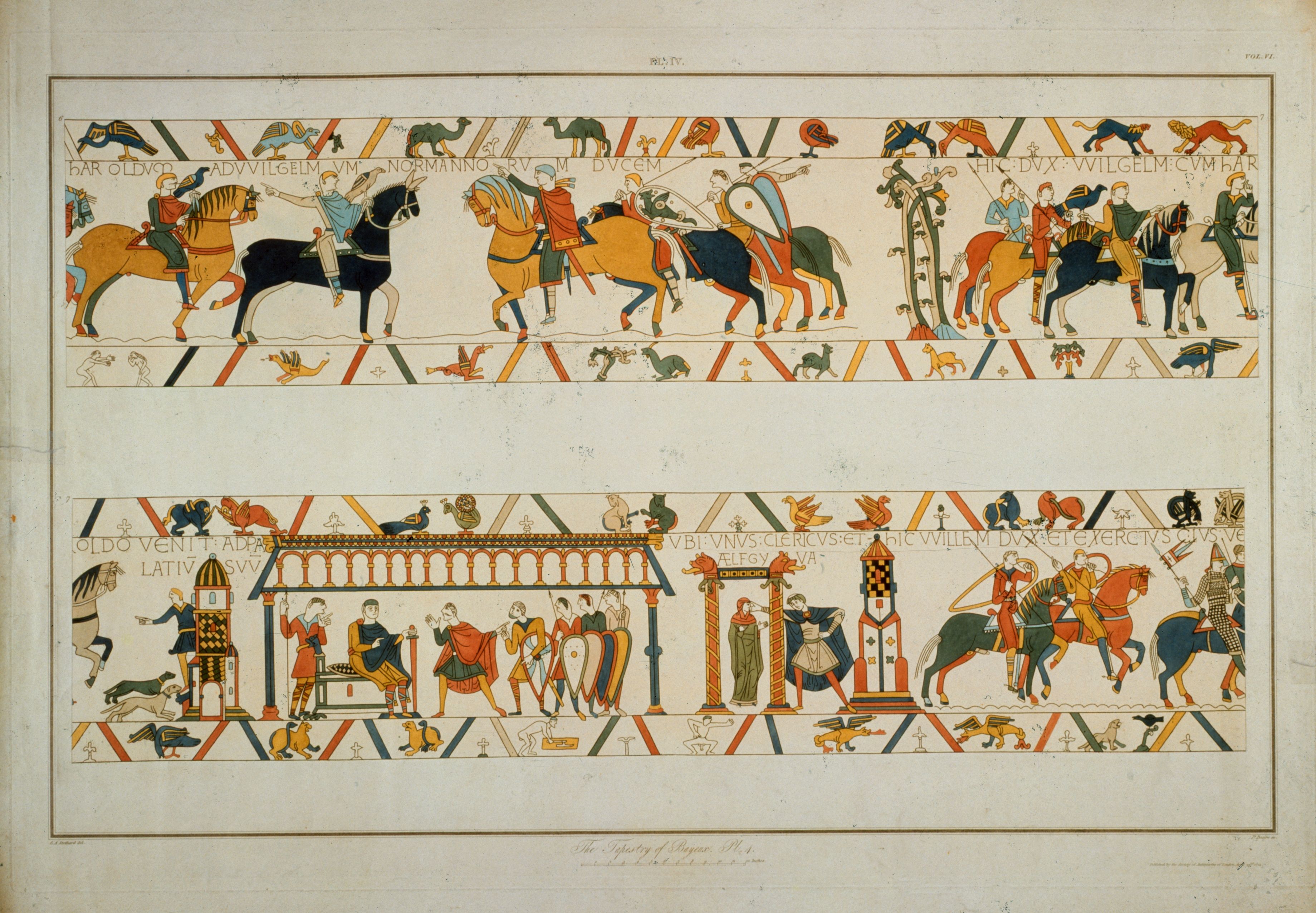
A painting of The Battle of Hastings and the Death of King Harold.Joseph Martin Kronheim
In one battle, William the Conqueror led the Normans in sweeping away Anglo-Saxon rule. But what effects did the Battle of Hastings have on British history?
The one date every English schoolchild knows is 1066, the Battle of Hastings, when William the Conqueror led the Normans in sweeping away Anglo-Saxon rule. The takeoff transpired in, literally, the blink of an eye if you believe the popular claim that King Harold II of England was mortally blinded by an arrow on that fateful October 14.

'Vintage engraving from 1876 showing the Battle of Hastings in 1066 IMAGE: GETTY IMAGES
Over the next 88 years, four Norman kings bullied and bossed the country, and their rule would dramatically alter England’s social, political and physical landscape. They left in their wake brash castles, bold cathedrals and a firmly entrenched class system.
Read more
Let's start in East Sussex
Dust off your Norman passport and begin your journey to scenes of the times in Battle, East Sussex. Some five miles from Hastings, this is the scene of that epoch-changing fight in 1066 known as the Battle of Hastings. The town of Battle grew up around the abbey William built on the battlefield to commemorate his victory.
No relics from the famous encounter have ever been found, but an English Heritage audio tour of the battlefield brings to life what happened when Harold and William, with roughly 7,000 men apiece, spent 10 hours in combat until, “all around the only color to meet the gaze was blood-red.” Eventually, after feigning retreat, William’s cavalry and archers outfoxed and routed the pursuing English foot soldiers.
The Normans continued the rampage to Dover and London, where William was crowned King at Westminster Abbey on Christmas Day. He later had the great Benedictine abbey built at Battle, as an act of public atonement for the bloodshed of 1066 and, perhaps more importantly, as a magnificent symbol of his victory.

Battle Abbey at Battle near Hastings, Surrey, England is the burial place of King Harold, built at the battle field at the place were he fell, at the Battle of Hastings in 1066, built in the 11th century it is now an ancient ruin
Today, only the outline of the original church and later buildings survive, but you’ll find a stone plaque on the site of the high altar that marks the spot where Harold is said to have fallen. Even today, flowers are sent from all over the world to respect the tragic anniversary of England’s last Saxon king.
The aggressive and land-hungry Normans - or “Northmen”- of Viking descent, had established a power base in northern France that became the Duchy of Normandy. Though the Normans swiftly acquired the culture of the French aristocracy, they never lost their taste for ruthless conquest. England, which the Saxons had made into one of the wealthiest states in Europe, offered rich pickings.
The origins of the Bayeux tapestry
Indeed, William “the Bastard” son of Robert I, Duke of Normandy, asserted that Harold’s predecessor, childless King Edward the Confessor, had promised him the English throne. The renowned Bayeux Tapestry, 70-plus meters of triumphant Norman propaganda, backs his story. If you don’t nip across the English Channel to view the real thing in Bayeux, there’s a striking Victorian replica to peruse at Reading Museum!

In a scene from the Bayeux Tapestry, William the Conqueror (c.1027 - 1087) rescues the future King Harold II (c.1022 - 1066) from captivity in France and betrothes his daughter Aelfgifu to him, 1064. The tapestry is housed in the town of Bayeux in Normandy. (Photo by Hulton Archive/Getty Images)
Though the facts of the matter remain unknown, in an age when military might gave right, William pressed his claim. Once he had gained a toehold in southeast England, William launched the Norman conquest strategy: Unleash terror, then settle in and intermarry with the locals, while maintaining control through land ownership, feudal loyalties and efficient government.
The Norman takeover required strongholds - first, hastily created motte-and-bailey strongholds from which to keep the locals in check. In places like Oxford and Barnstaple, the wooden towers have long rotted, but you can still spot telltale grassy bulges.
In the longer run, the invaders built formidable stone castles in towns and on strategic routes, the like of which had never been seen on British soil. Brutal, thick-walled and terrifying, many remain standing to this day. The immense White Tower of the Tower of London is typical: The thundering rectangular keep was completed, by Anglo-Saxon forced labor, in 1100.
* Originally published in 2012.





Comments